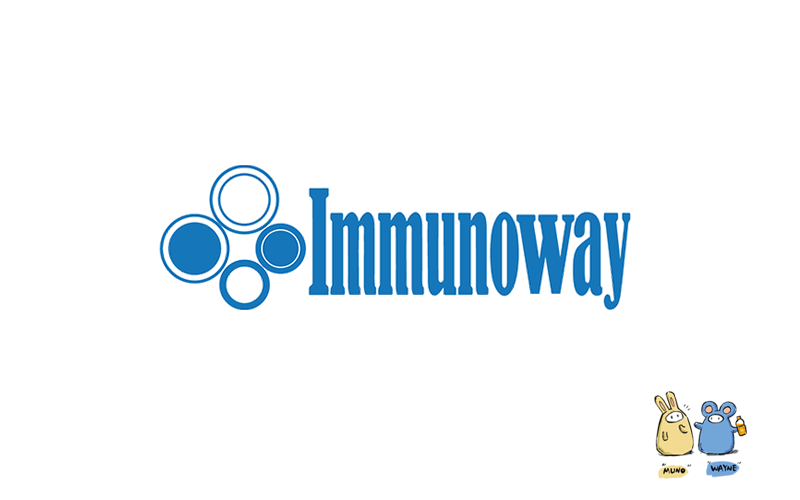
Catalog: YN1456
Size
Price
Status
Qty.
200μL
$450.00
In stock
0
100μL
$280.00
In stock
0
40μL
$150.00
In stock
0
Add to cart


Collected


Collect
Main Information
Target
PTN12
Host Species
Rabbit
Reactivity
Human, Mouse
Applications
WB, ELISA
MW
85kD (Observed)
Conjugate/Modification
Unmodified
Detailed Information
Recommended Dilution Ratio
WB 1:500-2000; ELISA 1:5000-20000
Formulation
Liquid in PBS containing 50% glycerol,0.5% BSA and 0.02% sodium azide.
Specificity
PTN12 Polyclonal Antibody detects endogenous levels of protein.
Purification
The antibody was affinity-purified from rabbit antiserum by affinity-chromatography using epitope-specific immunogen.
Storage
-15°C to -25°C/1 year(Do not lower than -25°C)
Concentration
1 mg/ml
MW(Observed)
85kD
Modification
Unmodified
Clonality
Polyclonal
Isotype
IgG
Related Products
Antigen&Target Information
Immunogen:
Synthesized peptide derived from part region of human protein
show all
Specificity:
PTN12 Polyclonal Antibody detects endogenous levels of protein.
show all
Gene Name:
PTPN12
show all
Protein Name:
Tyrosine-protein phosphatase non-receptor type 12 (PTP-PEST) (Protein-tyrosine phosphatase G1) (PTPG1)
show all
Background:
The protein encoded by this gene is a member of the protein tyrosine phosphatase (PTP) family. PTPs are signaling molecules that regulate a variety of cellular processes including cell growth, differentiation, mitotic cycle, and oncogenic transformation. This PTP contains a C-terminal PEST motif, which serves as a protein-protein interaction domain, and may regulate protein intracellular half-life. This PTP was found to bind and dephosphorylate the product of the oncogene c-ABL and thus may play a role in oncogenesis. This PTP was also shown to interact with, and dephosphorylate, various products related to cytoskeletal structure and cell adhesion, such as p130 (Cas), CAKbeta/PTK2B, PSTPIP1, and paxillin. This suggests it has a regulatory role in controlling cell shape and mobility. Alternative splicing results in multiple transcript variants encoding distinct isoform
show all
Function:
Catalytic activity:Protein tyrosine phosphate + H(2)O = protein tyrosine + phosphate.,Disease:Defects in PTPN12 are found in some colon cancers.,similarity:Belongs to the protein-tyrosine phosphatase family. Non-receptor class 4 subfamily.,similarity:Contains 1 tyrosine-protein phosphatase domain.,subunit:Interacts with TGFB1I1 (By similarity). Interacts with PSTPIP1.,
show all
Cellular Localization:
Cytoplasm . Cell junction, focal adhesion . Cell projection, podosome . Partial translocation to focal adhesion sites may be mediated by interaction with SORBS2. .
show all
Tissue Expression:
Brain,Cerebellum,Colon,Colorectal carcinoma,Epithel
show all
Reference Citation({{totalcount}})
Catalog: YN1456
Size
Price
Status
Qty.
200μL
$450.00
In stock
0
100μL
$280.00
In stock
0
40μL
$150.00
In stock
0
Add to cart


Collected


Collect
Recently Viewed Products
Clear allPRODUCTS
CUSTOMIZED
ABOUT US
Toggle night Mode
{{pinfoXq.title || ''}}
Catalog: {{pinfoXq.catalog || ''}}
Filter:
All
{{item.name}}
{{pinfo.title}}
-{{pinfo.catalog}}
Main Information
Target
{{pinfo.target}}
Reactivity
{{pinfo.react}}
Applications
{{pinfo.applicat}}
Conjugate/Modification
{{pinfo.coupling}}/{{pinfo.modific}}
MW (kDa)
{{pinfo.mwcalc}}
Host Species
{{pinfo.hostspec}}
Isotype
{{pinfo.isotype}}
Product {{index}}/{{pcount}}
Prev
Next
{{pvTitle}}
Scroll wheel zooms the picture
{{pvDescr}}



















